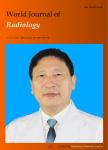Radiology education in Europe: Analysis of results from 22 European countries
Radiology education in Europe: Analysis of results from 22 European countries作者机构:Department of Radiology and Biomedical Imaging University of California Department of Radiology Massachusetts General Hospital Harvard Medical School Department of Radiology University of Szeged Consultant Diagnostic Radiologist RAD-AID International
出 版 物:《World Journal of Radiology》 (世界放射学杂志(英文版)(电子版))
年 卷 期:2017年第9卷第2期
页 面:55-62页
学科分类:0401[教育学-教育学] 04[教育学] 040107[教育学-成人教育学] 1009[医学-特种医学] 10[医学]
主 题:Radiology education European radiology survey Radiology training Residency Radiology research
摘 要:AIMTo assess the state of radiology education across Europe by means of a survey *** comprehensive 23-item radiology survey was distributed via email to the International Society of Radiology members, national radiological societies, radiologists and medical physicists. Reminders to complete the survey were sent and the results were analyzed over a period of 4 mo (January-April 2016). Survey questions include length of medical school and residency training; availability of fellowship and subspecialty training; number of residency programs in each country; accreditation pathways; research training; and medical physics education. Descriptive statistics were used to analyze and summarize *** residency training ranges from 2-6 years with a median of 5 years, and follows 1 year of internship training in 55% (12 out of 22) European countries. Subspecialty fellowship training is offered in 55% (12 out of 22) European countries. Availability for specialization training by national societies is limited to eight countries. For nearly all respondents, less than fifty percent of radiologists travel abroad for specialization. Nine of 22 (41%) European countries have research requirements during residency. The types of certifying exam show variation where 64% (14 out of 22) European countries require both written and oral boards, 23% (5 out of 22) require oral examinations only, and 5% (1 out of 22) require written examinations only. A degree in medical physics is offered in 59% (13 out of 22) European countries and is predominantly taught by medical physicists. Nearly all respondents report that formal examinations in medical physics are *** learning experiences across the continent will help guide the development of comprehensive yet pragmatic infrastructures for radiology education and collaborations in radiology education worldwide.



